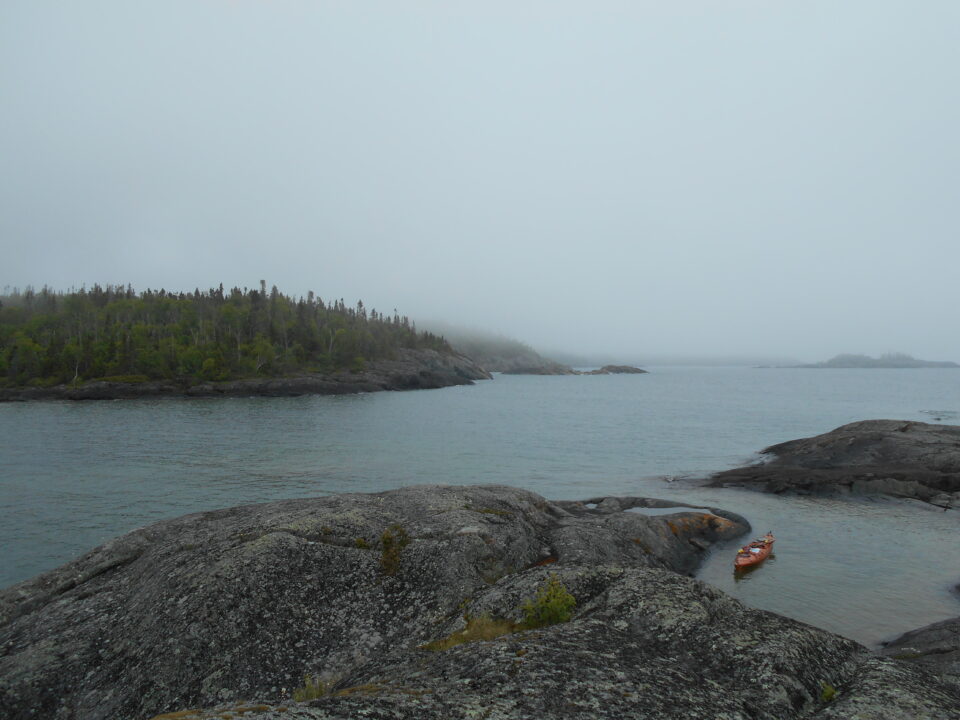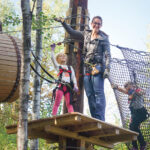Canada and the United States share the longest border in the world, stretching some 8,891 kilometers (5,525 miles) from coast to coast. Along that border there are numerous places to cross—especially by canoe—however, only a few of those locations have proper border checkpoints.
To legally cross into Canada from the Minnesota North Shore (or vice versa), visitors must either cross at the Grand Portage Pigeon River Port of Entry and show proper documentation, or apply for a Remote Area Border Crossing (RABC) permit ahead of time to cross remotely through the wilderness.
RABC permits make it possible to explore the Canadian wilderness from areas like the Boundary Waters Canoe Area Wilderness (BWCAW) without having to check in with border patrol at the end of the Pigeon River. For any U.S. citizen who owns a cabin on the Canadian side of a border lake, for example, visiting that cabin would be an unbearable nuisance without an RABC.
The RABC system has been in place for decades and has been effective in facilitating border crossings for individuals who live in remote areas and are unable to check-in at an official point of entry. The RABC program was suspended during the COVID-19 pandemic, but started back up in 2022 and is in full swing again for the 2023 paddling season.
For anyone planning a canoe trip into Quetico Provincial Park, or wanting to paddle into Canada via Lake Superior, an RABC is a must to avoid getting into trouble with the law. Applying for a RABC permit requires some planning and foresight, but the process itself is relatively straightforward and easy to manage. Just don’t forget to do it before your trip.
There are a couple of ways to apply for a RABC. Interested parties can either do so by email, mail, or in person at the Pigeon River Port of Entry. The easiest way to apply is via email, but applying in person at the border can work in a pinch if it is not too far out of the way. For anyone sending in an application by mail, it must be sent four to six weeks prior to the trip.
Regardless of how you plan on applying, however, there is no reason to cut it close. If you are planning a trip into Canada this paddling season, it is never a bad idea to apply for an RABC as soon as the idea starts to germinate. Worse case scenario? Your plans change and you find yourself out $30 Canadian—the processing fee for acquiring a RABC.
To apply for a RABC permit, Canadian residents must provide proof of residency and a valid government-issued photo ID, such as a passport or driver’s license. U.S. citizens must provide proof of citizenship and a valid government-issued photo ID. Additionally, applicants must provide information on the purpose of their visit and the expected length of their stay.
The complete RABC permit application can be found on the Canada Border Services Agency’s webpage at: bit.ly/rabcpermitapplication.
Once approved, RABC permits are valid until December 31, and allow multiple crossings into Canada via the designated areas. Remote areas covered by the RABC are from the Pigeon River west through the Lake of the Woods, the Canadian shore of Lake Superior, Cockburn Island, Sault Ste. Marie, and the Northwest Angle Area.
That all being said, with so much wilderness to explore on the U.S side of the border, why bother with an RABC? Is it worth the extra effort? Absolutely.
The BWCAW is hard to beat when it comes to wilderness adventure, but as anyone who has had the privilege of exploring Quetico will tell you, the forests and lakes across the border have plenty to offer and are spectacular in their own right.
The Canadian shore of Lake Superior is another reason why RABC’s are worthwhile. The Minnesota North Shore is gorgeous, but the remote, wild nature of the shore once across from Pigeon Point is something else entirely. The Canadian Shore of Lake Superior is the most rugged and remote of the whole Lake, and it is well worth the extra effort to experience it.




